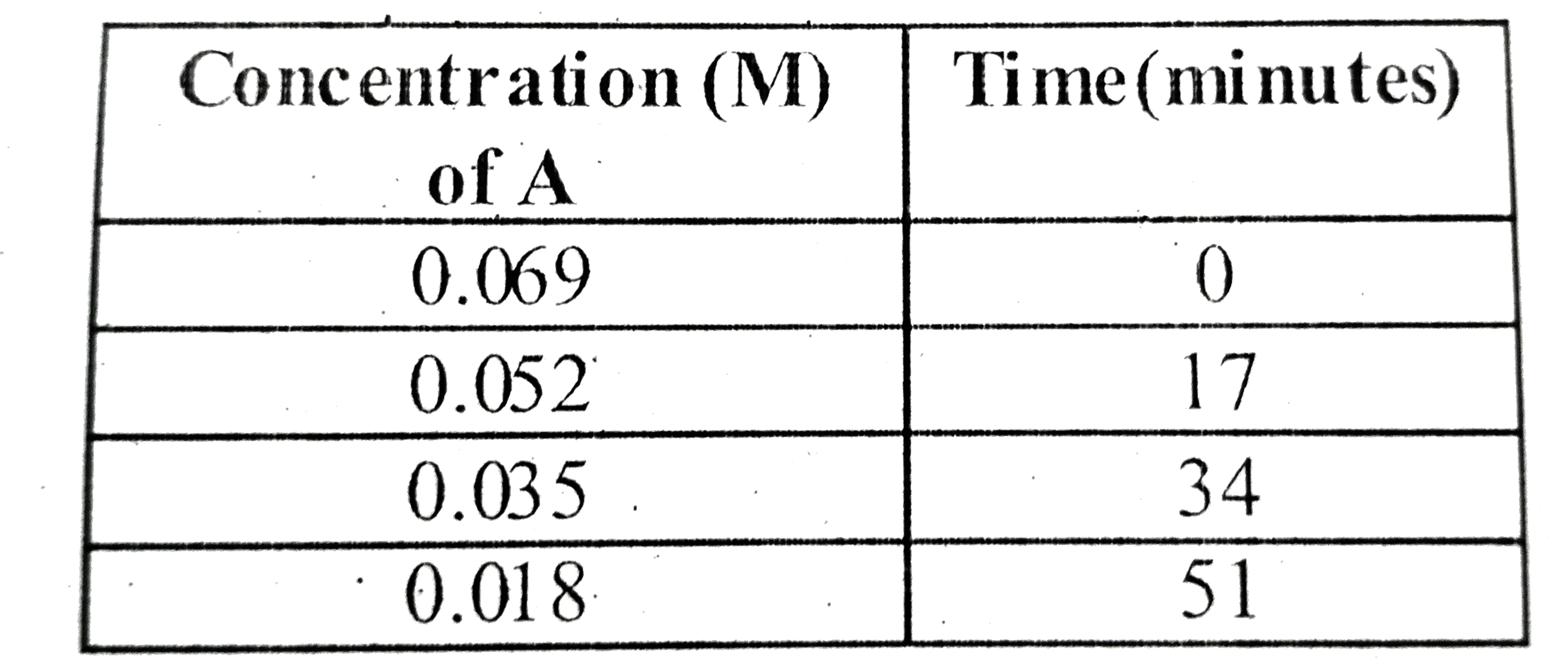If the concentration of the reactants in the elementary reaction 2A + B C + D is increased three folds, the rate of the reaction will be increased by:
27 times
9 times
64 times
10 times
The correct Answer is:A
To solve the problem, we need to analyze the given elementary reaction and how the rate of the reaction changes with the concentration of the reactants.
1. Identify the Reaction: The given elementary reaction is:
2A+B→C+D
2. Determine the Order of the Reaction: For an elementary reaction, the order of the reaction is equal to its molecularity. Here, the molecularity can be calculated as the sum of the stoichiometric coefficients:
- For 2A, the coefficient is 2.
- For B, the coefficient is 1.
- Therefore, the total molecularity (and thus the order) is:
2+1=3
3. Write the Rate Law: The rate of the reaction can be expressed in terms of the concentrations of the reactants:
Rate(R)=k(A)2(B)1
where k is the rate constant, (A) is the concentration of A, and (B) is the concentration of B.
4. Increase the Concentrations: According to the problem, the concentrations of the reactants are increased threefold:
- New concentration of A becomes 3(A)
- New concentration of B becomes 3(B)
5. Calculate the New Rate: The new rate of the reaction (R′) with the increased concentrations is:
R′=k(3(A))2(3(B))1
Simplifying this:
R′=k⋅9(A)2⋅3(B)=27k(A)2(B)
6. Determine the Factor by Which the Rate Increases: To find out how many times the new rate R′ is compared to the original rate R:
R′R=27k(A)2(B)k(A)2(B)=27
7. Conclusion: The rate of the reaction increases by a factor of 27 when the concentrations of the reactants are increased threefold.
Final Answer:
The rate of the reaction will be increased by 27 times.
---
2A+B→C+D
- For 2A, the coefficient is 2.
- For B, the coefficient is 1.
- Therefore, the total molecularity (and thus the order) is:
2+1=3
Rate(R)=k(A)2(B)1
where k is the rate constant, (A) is the concentration of A, and (B) is the concentration of B.
- New concentration of A becomes 3(A)
- New concentration of B becomes 3(B)
R′=k(3(A))2(3(B))1
Simplifying this:
R′=k⋅9(A)2⋅3(B)=27k(A)2(B)
R′R=27k(A)2(B)k(A)2(B)=27
The rate of the reaction will be increased by 27 times.
Similar Questions
Knowledge Check
Which of the following statement is correct? A)The rate of a reaction decreases with passage of time as the concentration of reactants decreases. B)The rate of a reaction is same at any time during the reaction C)The rate of a reaction is independent of temperature change D)The rate of a reaction decreases with increase in concentration of reactant(s)
AThe rate of a reaction decreases with passage of time as the concentration of reactants decreases.BThe rate of a reaction is same at any time during the reactionCThe rate of a reaction is independent of temperature changeDThe rate of a reaction decreases with increase in concentration of reactant(s)
When the concentration of a reactant in reaction A→B is increased by 8 times but rate increases only 2 times, the order of the reaction would be
View SolutionThe concentrations of the reactant A in the reaction A →B at different times are given below:

The rate constant of the reaction according to the correct order of reaction is :
View SolutionIf doubling the concentration of a reactant X in a reaction X+Y→ Products, increases the rate four times and tripling its concentration increases the rate nine times, this indicates that the rate of reaction is proportional to the ………….of the concentration of.............and thus rate is given by........... .
View SolutionGreater the concentration of reactants, slower the rate of reaction––––––––––––––––––––––––––––.
View SolutionGreater the concentration of reactants, slower the rate of reaction––––––––––––––––––––––––––––.
View SolutionGreater the concentration of reactants, slower the rate of reaction––––––––––––––––––––––––––––.
View SolutionIn the following reaction, A+B+Q⇌C+D the temperature is increased then concentration of the product will
View Solution
